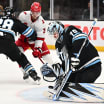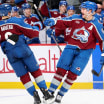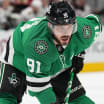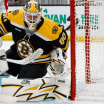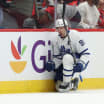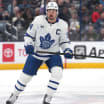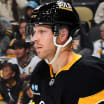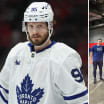The story of USA Hockey's Try Hockey For Free program began more than 10 years ago, when it collaborated with the NHL, the NHL Players' Association and equipment manufacturers to brainstorm ideas on how to get children new to hockey to try it without the initial cost of spending money on equipment. The mission statement was simple: Provide kids with an experience that will inspire and motivate them to play the game, and for parents to get involved growing it at the grassroots level.
Seven years ago, USA Hockey held its first Try Hockey For Free Day at the University of Denver, where more than 100 kids participated in two one-hour sessions. From there, the program evolved to sessions in 10 facilities across Connecticut before expanding into the rest of New England.
Try Hockey For Free program continues to grow
Nearly 500 venues will host events Saturday, introducing sport to children
Pat Kelleher, USA Hockey's assistant executive director of membership development, knew he was on to something.
"We looked at that and said, 'We put a lot of time, effort and resources into one location. How do we make this bigger?'" Kelleher said.
Entering its seventh season, Try Hockey For Free Day is bigger and better; a record total of nearly 500 locations will host events Saturday as part of Come Play Hockey Month. The initiative has introduced the sport to more than 116,000 children between ages 4 and 9 in the past six seasons from every state except Hawaii, and it continues to grow thanks to momentum generated from the support of the League and its 30 teams.
"After a couple of years figuring out exactly how to make it work for an entire state and an entire region, we knew we had a model here that can fit nationally," Kelleher said. "Going from really a local event, to a state event, to a regional event to a national event, we just grew into this. People have really jumped on board, and it's become quite a thing to have two national days of the year focused on introducing kids to our game.
"The efforts the clubs put in to promote Try Hockey in their markets is significant for us."
The growth of hockey in the United States also is significant. The team that won gold at the 1980 Lake Placid Olympics had players from four states: Massachusetts, Minnesota, Michigan and Wisconsin. Today, three times as many are producing players at the highest level, and players who have competed in the IIHF World Junior Championship have come from at least 10 states.
The term "non-traditional hockey market" has become obsolete. The game is thriving in the Sun Belt, which received a bigger boost when Scottsdale, Arizona, native Auston Matthews excelled playing for the U.S. in numerous tournaments and the Swiss National League A before the Toronto Maple Leafs selected him with the No. 1 pick in the 2016 NHL Draft; Matthews was the first U.S.-born player to be chosen No. 1 since Patrick Kane by the Chicago Blackhawks in 2007.
"Probably the greatest story we have is the story of Auston Matthews," Kelleher said. "You look at a kid like Matthews, his parents had no experience with hockey. They ended up at a [Arizona] Coyotes game and the kid just looked at it and said, 'That's what I want to do.' [Now] he's scoring four goals on opening night for the Toronto Maple Leafs."
USA Hockey's outreach starts through a webinar given to participating associations on how to successfully host Try Hockey For Free Day and providing press releases and other assets to help them locally. The League and its teams also assist with promotion through in-game announcements during televised broadcasts, as well as on NHL.com and the SiriusXM NHL Network. The campaign will be repeated leading into the second Try Hockey For Free Day on Feb. 25, 2017, during Hockey Week in America.
"February is a little bit different," Kelleher said. "It's a great time to celebrate the game because in February we're closing in on NHL playoffs. You're in the heart of the hockey season, so there's a lot of awareness around the game. It's a great part of our celebration for hockey because it ties in the celebration of the game at the highest level, and everything that's going on across the country, but it also introduces new people to the game."
Families can visit TryHockeyForFree.com for locations and information on how to sign up. Equipment, with the exception of a helmet and gloves, is provided and there's no investment to get started.
